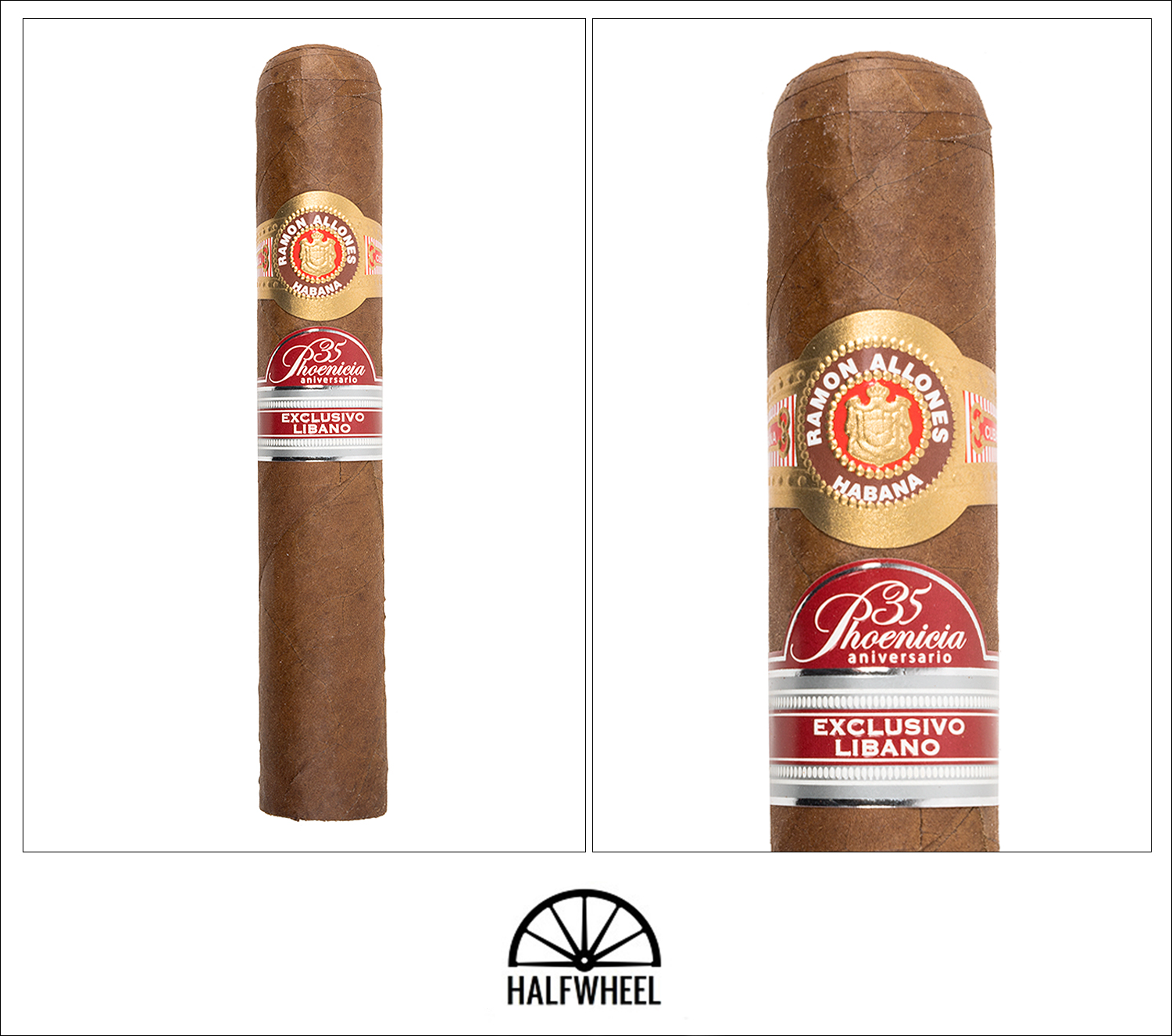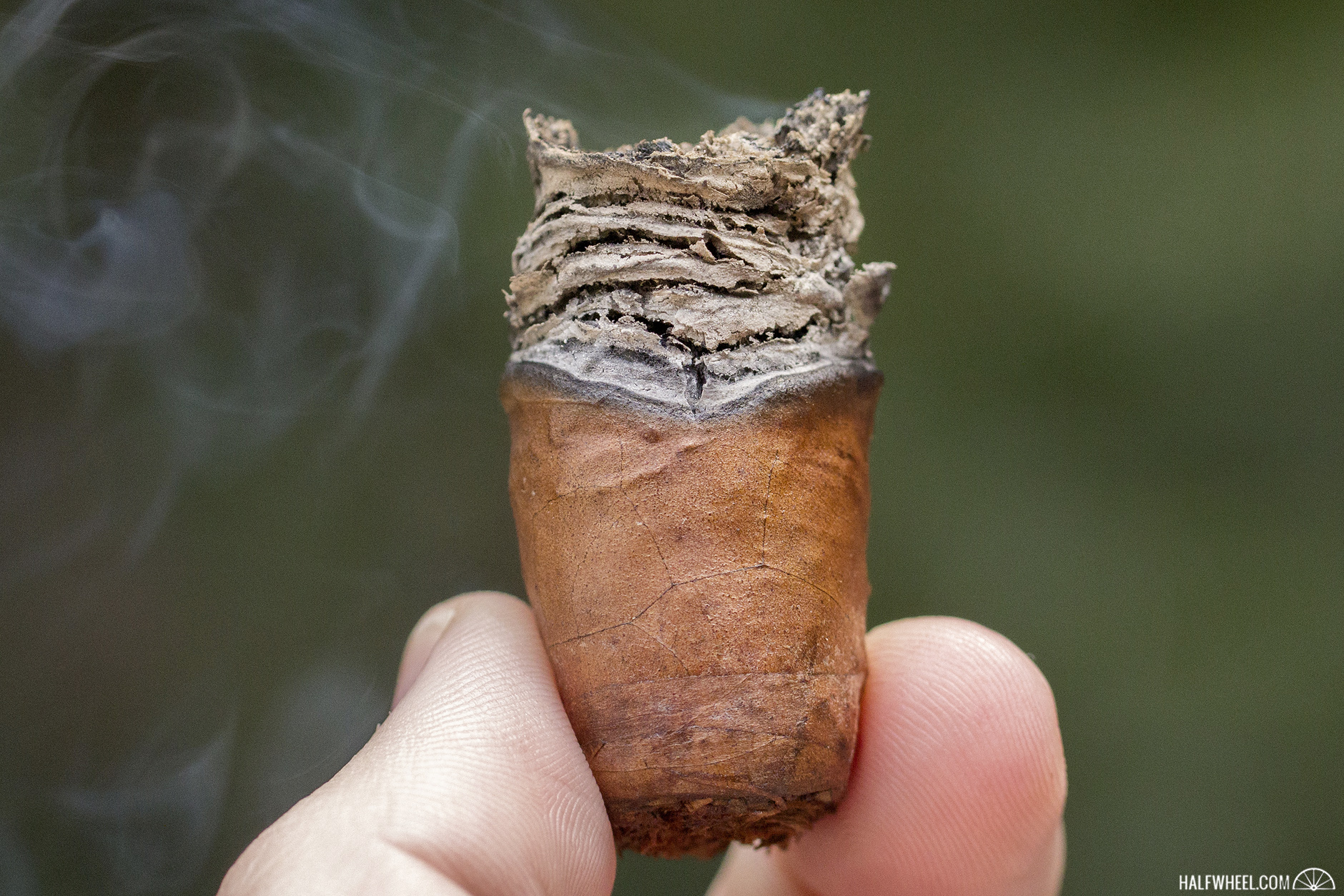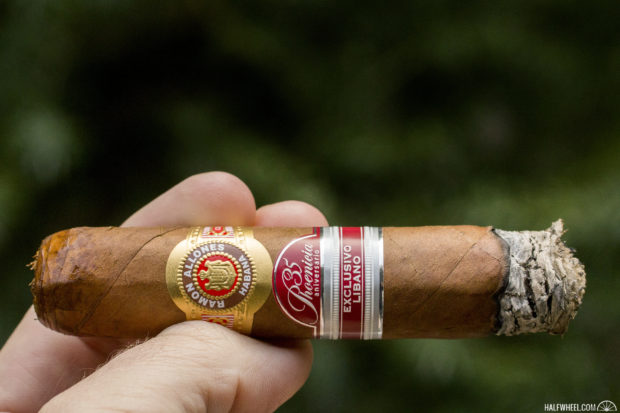You say there’s a new Edición Regional for Phoenicia Trading A.A. that’s heading to Lebanon? Probably a Ramón Allones. And it’s for the company’s 35th anniversary? Definitely a Ramón Allones.
Since 2008, the marca and the region have been incredibly intertwined, with seven Edición Regional releases created up until 2015, when this cigar came out.
- Ramón Allones Phoenicio (6 4/9 x 54) — 2008
- Ramón Allones Beritus (5 3/10 x 52) — 2009
- Ramón Allones Phoenicio 32 (6 1/8 x 52) — 2010
- Ramón Allones Eshmoun (6 4/9 x 54) — 2012
- Ramón Allones Sidon (6 x 53) — 2013
- Ramón Allones Sur (5 1/2 x 52) — 2014
- Ramón Allones Phoenicio 35 (5 1/8 x 55) — 2015
The vitola for this release is one known as the Montesco, measuring 5 1/8 inches (130mm) long with a 55 ring gauge, a thick robusto that is the same as the Romeo y Julieta Wide Churchills, which debuted in 2010. Since then, it has been used for nine Edición Regional releases, the Romeo y Julieta Wide Churchills Gran Reserva Cosecha 2009 release that was announced in 2015, as well as a pair of Edición Limitadas, the Hoyo de Monterrey Gran Epicure from 2013 and the upcoming Montecristo Supremos, slated to be a 2019 release.
It was an anniversary celebrated with a good number of cigars, as Phoenicia Trading A.A. commissioned 10,000 boxes of 25 cigars, a total of 250,000 cigars.
Since 2016, there hasn’t been another Ramón Allones Edición Regional created for Lebanon, instead three different marcas have been selected:
- Bolívar Byblos (4 1/2 x 52) — 2016
- El Rey del Mundo WIH 20 (5 9/10 x 54) — 2017
- Quai d’Orsay Baalbeck (5 1/2 x 54) — 2018
Of note amongst those three is the El Rey del Mundo, which gets its unique name from the abbreviation for Walk in Humidor, and in particular, the one located in Lebanon’s Beirut-Rafic Hariri International Airport. It was the first and remains largest walk-in humidor in the duty-free market, having opened in 1997.

- Cigar Reviewed: Ramón Allones Phoenicio 35 Edición Regional Libano (2015)
- Country of Origin: Cuba
- Factory: n/a
- Wrapper: Cuba
- Binder: Cuba
- Filler: Cuba
- Length: 5 1/8 Inches
- Ring Gauge: 55
- Vitola: Robusto Extra
- MSRP: $28 (Boxes of 25, $700)
- Release Date: 2016
- Number of Cigars Released: 10,000 Boxes of 25 Cigars (250,000 Total Cigars)
- Number of Cigars Smoked For Review: 3
What makes the Ramón Allones Phoenicio 35 stand out from other cigars or even Edición Regional releases is the secondary band, which get an extra flourish denoting the 35th anniversary of Phoenicia Trading A.A. that wouldn’t be found on a typical Edición Regional band. With the extra red on that band, as well as the red in the Ramón Allones band, it seems to carry over into how I perceive the color of the top leaf. As for the cigar, It’s thick in the hand with a meaty, reddish-brown wrapper that has a matte finish, small veins, and not much variation in color other than near the head, where it looks like a bit of extra adhesive for the head and cap might have dried. It’s a fairly firm cigar though it has a bit of sponginess, typical for what I generally think of in the Cuban cigar universe. The foot of the cigar has a subtle pastry sweetness to it, with a sugary glaze standing out and providing the most distinct aroma. The cold draw is a bit firm with the cigar showing some softness near the head, and it feels like the structure of the cylinder isn’t quite as solid as I had originally imagined. Flavor-wise, there isn’t much to report; a bit of very mild orange peel quickly gets overshadowed by some heavier, generic tobacco flavors, though the second sample delivers a meatiness reminiscent of a decent quality meat stick.
The Ramón Allones Phoenicio 35 Edición Regional Libano is somewhat slow to light and definitely slow to get burning; the foot turns black before picking up the more familiar gray ash color, and after 10 minutes of puffing it doesn’t seem like I’ve moved the burn line along much. While the first puffs are rather inauspicious, pepper comes along shortly thereafter, with white pepper tingling the nose and black pepper settling on the palate. The one exception is the third sample, which shows a youthful, stinging pepper in the nose shortly after lighting. The second sample develops a fairly full mouthfeel just shy of the one-inch mark and it grabs my attention more than the first sample even though I can’t say the flavors are any more distinct. There’s a bit of creaminess holding everything together while black pepper and dry woods try and emerge from that base, which is doing its best to stay in the forefront. The burn line through the first inch is decent but starts to get a bit wavy thereafter, with the cigar picking up an orange and cedar sweetness in the aroma. There still aren’t a lot of flavors jumping off the cigar as the transition to the second third begins, instead delivering what I would refer to as a fairly generic but well-balanced flavor of tobacco that invites interpretation into other flavors, almost as if I translate the aroma of an aged bale of tobacco into a flavor. Construction so far has been good with nothing of note to complain about, though the draw does occasionally feel a bit tight and the puffs subsequently labored.

The cigar’s black pepper shifts to a more moderate and somewhat lighter expression near the start of the second third, and as such shifts to become more a more distinctive aspect of the Ramón Allones Phoenicio 35. The burn line progresses faster than I was anticipating and while I’ve been savoring the current profile, it advances rather quickly to the midway point before I can really take notice. By the midpoint, the flavor takes on a bit more wood, specifically cedar, which creates an interesting drying sensation in the mouth and seemingly around the tongue rather than on it. There is a bit of char starting to emerge as an attachment to the pepper notes, giving the finish more of a smoky characteristic than it has shown prior. If I were to say the cigar still tasted a bit young, it would be because of the back half of the second third, which brings about a bit of irritation to the taste buds and throat that could get masked as black pepper but is unmistakable in its physical effect. It is varied but generally consistent, though its presence on the second sample is mild enough that I’m tempted to give it a pass. The burn line starts to tilt once the burn line crosses the midway point, staying even relative to itself but not to the cylinder of the cigar.

The final third sees the flavor get thicker and dense, though they don’t get more concentrated despite the smoke becoming chewier and thicker. Tobacco is still the dominant flavor and feels like a museum docent asking me what I see in the abstract painting hanging on the wall that’s been bringing everyone to the hall and has a crowd in contemplation. Pepper is dialed back from its most vibrant levels, though a retrohale still delivers enough for my preference, and it’s surprisingly smooth to boot. The final inches have me thinking that the head of the cigar may be a bit damp still, and the first sample shows an increasing sponginess as it seems to give a bit more every time I pick it up from the ashtray. The second sample, which is the best of the three, sees the flavor thin out a bit, with all three samples picking up a mix of toast and char that indicates that heat is starting to adversely affect the flavor, signaling the end of the cigar with about an inch of tobacco left to burn.

Final Notes
- I usually complain about how hard it is to remove the bands from Cuban cigars, both for how tightly they are applied and how the adhesive seems to seep into the bands. These, however, were completely different. They weren’t loose, but they were by far the easiest to remove that I can recall in recent memory.
- There is a part of me that feels conflicted by the bands; the primary Ramón Allones band has a gold trim while the secondary band is trimmed in silver, and as the fashion advice goes, don’t mix your metals. However, it’s a common issue with Edición Regional releases so it doesn’t bug me too badly.
- The range of where this cigar seems to be at the moment is quite wide; as you may know we grade the cigar’s flavor in thirds, and there were certain thirds in certain samples where if I had to judge the cigar based solely on that, I’d recommend maybe getting one or two. Then there were other thirds that had me considering it a Top 25 candidate.
- The box code for these cigars was not available. I’d be interested to know as I suspect these were made anywhere between the second half of 2014 and the second half of 2015, and while they have some age on them already, more would seem to only further develop this cigar and help its cause.
- The word that Phoenicia comes from is also used in reference to date palms by Homer.
- What it does not share is an association with the word phoenix, the mythical bird who rises from flames and from which the city I live in gets its name.
- There’s little if any nicotine strength to be found in the Ramón Allones Phoenicio 35. I can’t say I felt any lingering effects from any of the three cigars I smoked.
- The cigars for this review were purchased by halfwheel for approximately $35 on the secondary market.
- Final smoking time was one hour and 25 minutes on average.
The Ramón Allones Edición Regional releases for Phoenicia Trading A.A. have garnered a good bit of a following and the Phoenicio 35 Edición Regional Libano will seemingly only add to it. The cigar isn’t quite perfect at this point in its life, but it certainly seems headed down the path towards aging into a rather incredible cigar. The complexity and balance are among the better Cuban cigars I have smoked, with no technical issues whatsoever. This cigar feels incredibly close to hitting its peak stride, which hopefully will last for several years to give people plenty of time to enjoy these, as they seem to merit full and focused attention when smoking as a full and completely rewarding experience awaits.



